FEAR OF FLYING – A PILOT’S GUIDE TO TURBULENCE: There are different types of turbulence, mainly from rapid changes in wind direction and strength, which make the aeroplane accelerate, decelerate, or move side to side. It’s these movements, sometimes several at once, that can be uncomfortable whilst flying as a passenger, make it harder to drink your gin and tonic, read your magazine, or from my end – do my inflight paperwork! An aircraft is designed to be stable, meaning if turbulence forces the plane from its original path, it is designed to return to its previous straight, level flight without any positive control from the pilots. For most of the duration of the flight, the autopilot is flying the aircraft, and its job to keep the aircraft flying the way the pilots have commanded it to, even after being disrupted by any turbulent air. The main sensation during turbulence is the aircraft climbing or descending, potentially resulting in a feeling in your stomach similar to that you get from driving over a hidden dip in the road.
IF YOU DISLIKE THE SENSATION OF FLYING DURING TURBULENCE, SIT OVER THE WINGS OF THE AIRCRAFT.
The feeling of climbing or descending initially is the result of the turbulence, followed by the opposing direction as the aircraft reacts to it. These changes feel more drastic when sitting at the rear of the aircraft, as whilst the aircraft begins to climb, the tail moves downward and you will have the unusual sensation of being pulled out of your seat. If you sit over the wing, the aircraft pitches around its centre axis, resulting in a smaller sensation of movement as a passenger.
The aircraft will rarely change altitude by any more than 50 feet, which honestly is insignificant in proportion to its cruising level of around 37,000ft. Although to some it may feel that way, I promise that the aircraft isn’t falling out of the air, and the change of wind direction is never great enough to result in the aeroplane to stop generating its lift that it creates to fly! Although the sensation can be unsettling, passenger aircraft are built to withstand turbulence, and every pilot completes training in how to recognise the signs of turbulence and avoid it when possible, and how to make the flight as comfortable as possible for the passengers. There are 4 main types of turbulence:- Clear Air Turbulence- Thermal (associated with clouds, especially those big fluffy cumulous clouds you see on a hot day!)- Mechanical (caused by the airflow over physical features, mountains, buildings, trees)- Wake turbulence (caused by other aircraft generating lift, the larger the aircraft, the larger the wake)
Clear Air Turbulence
This type of turbulence is caused by changes in the wind at high level, although high winds may not indicate turbulence. An increase or decrease of wind strength, entering or flying through a jetstream, or a change in temperature, can all create CAT. Although our weather radar cannot display areas of this type of turbulence, CAT can be predicted in our preflight preparations by studying the forecast windshear, areas of jetstreams and pilot reports. We’ll do our best to avoid any turbulence if possible, and other pilots are often helpful in recommending if the area they are flying in is bumpy or smooth. Sometimes unfortunately, we’ll just have to wait until it stops, but we have the option to climb or descend if we know that the area around us will be more comfortable.
Thermal Turbulence
I initially learned how to fly in gliders; as I flew without an engine I would look to stay in areas of hot, rising air to stay airborne for as long as possible. A good indication of an area of thermals were large, cauliflower cumulous clouds, which are formed by moist, unstable air rising faster than the area surrounding it. As the moisture condenses, the air becomes stable and eventually stops rising. When entering a cloud, we fly through this rising air, which often causes a short period of turbulence. As the aircraft I currently fly is larger and flies faster than a glider, the result is often a couple of bumps until the plane leaves the offending cloud! Imagine driving over a speed bump on a bicycle compared to going 70mph in a car, the result is exactly the same whilst flying. In the cruise we are flying at around speeds of 500mph, resulting in that small bump appearing to be more dramatic than it is in reality! Generally speaking, there are fewer clouds the higher you fly, although the faster you fly the turbulence may seem more pronounced. Whilst flying, we use a weather radar that detects the water particles in the air, with a colour code to indicate the density and turbulence associated with the clouds ahead. We use this radar to avoid any larger, cumulonimbus clouds which also indicate thunderstorms, and communicate with Air Traffic Control to ensure that we maintain a safe distance from the unstable, rising and descending air surrounding the storm.
Mechanical Turbulence
This type of turbulence is caused by the airflow moving around a large object, a mountain like in Gibraltar, or a large building close to the runway. Landing at my home base in Dublin can sometimes be a little bumpy when the wind is coming over the nearby Wicklow Mountains, or London Gatwick can be affected by wind changing direction around a hangar near the runway. Unfortunately, there’s not a lot that we can do whilst flying to these destinations, although we are often familiar and comfortable with this type of turbulence, and as it’s always forecast we can prepare prior to experiencing it!
Wake Turbulence
Wake turbulence is a created by the airflow over an aircraft’s wing that also enables it to generate lift and fly, and the chances of us experiencing wake turbulence whilst flying are very small thanks to our colleagues in Air Traffic Control. ATC ensure thatwe are at a safe distance from any aircraft that may affect us with their own turbulence. There are rules and regulations that both pilots and ATC follow regarding the distance from another aircraft, especially between larger and smaller aircraft, (an Airbus A380 is in its own category!), ensuring that there is a safe period of time between departing aeroplanes. Although turbulence is uncomfortable and inconvenient, the pilots and the aircraft are more than capable of dealing with what nature throws our way! Ensure when you’re flying you keep your seatbelt on (like the pilots always do) in case your flight does encounter any unexpected bumps, but try to relax and appreciate that although it may not feel that way, the aircraft is still in controlled flight and is built to withstand more than 50% of the worst forces that turbulence may throw its way. Captain Sullenburger recommends that prior to a flight close your eyes as a passenger in a car and make note of the frequency and intensity of every vibration, jolt and noise. The car journey is likely to be much more turbulent than your average flight, and statistically, the drive to the airport is much more dangerous than flying in a commercial airliner! Do you have any other fears or concerns whilst flying? Comment below and I’ll aim to answer any queries as part of my new Fear of Flight series.























